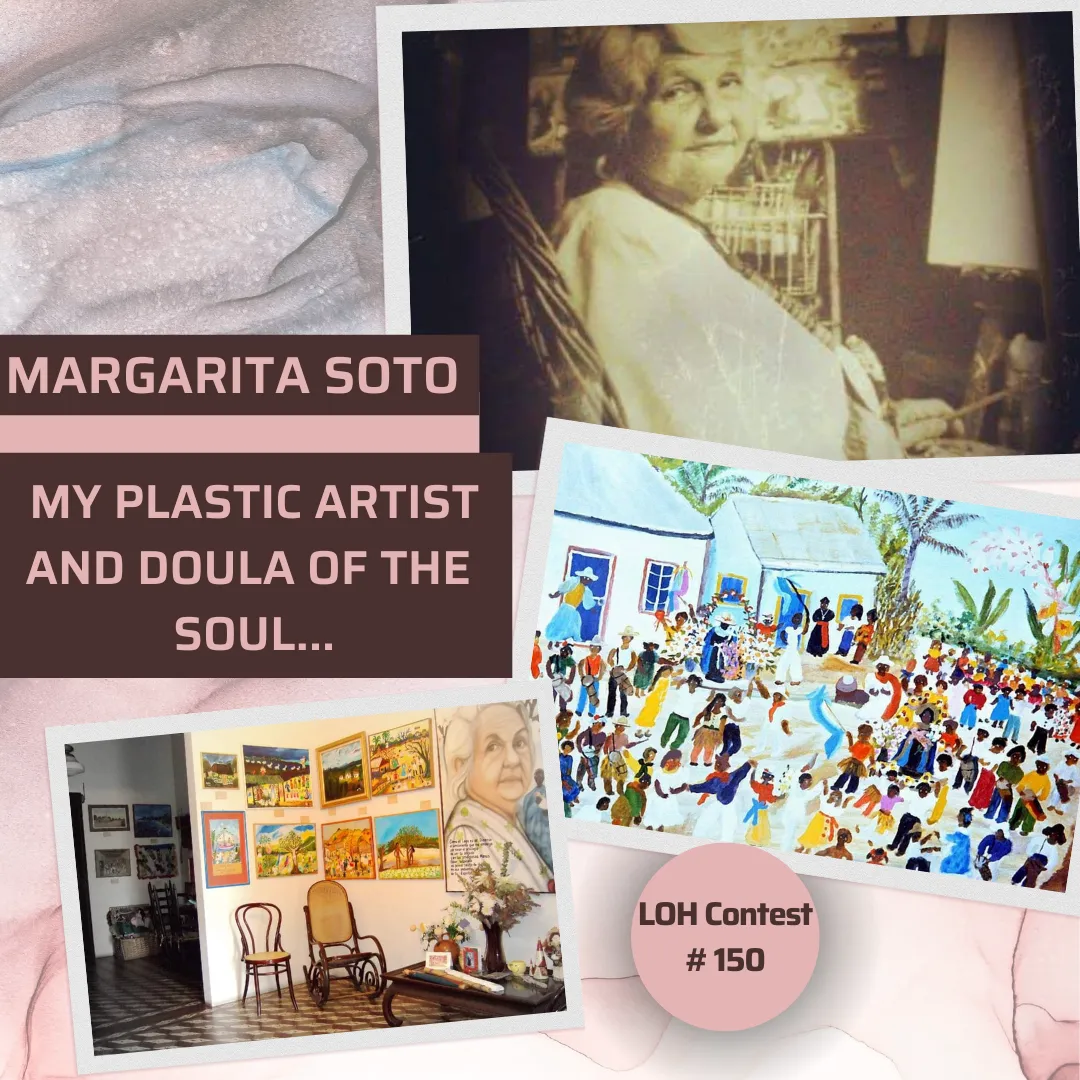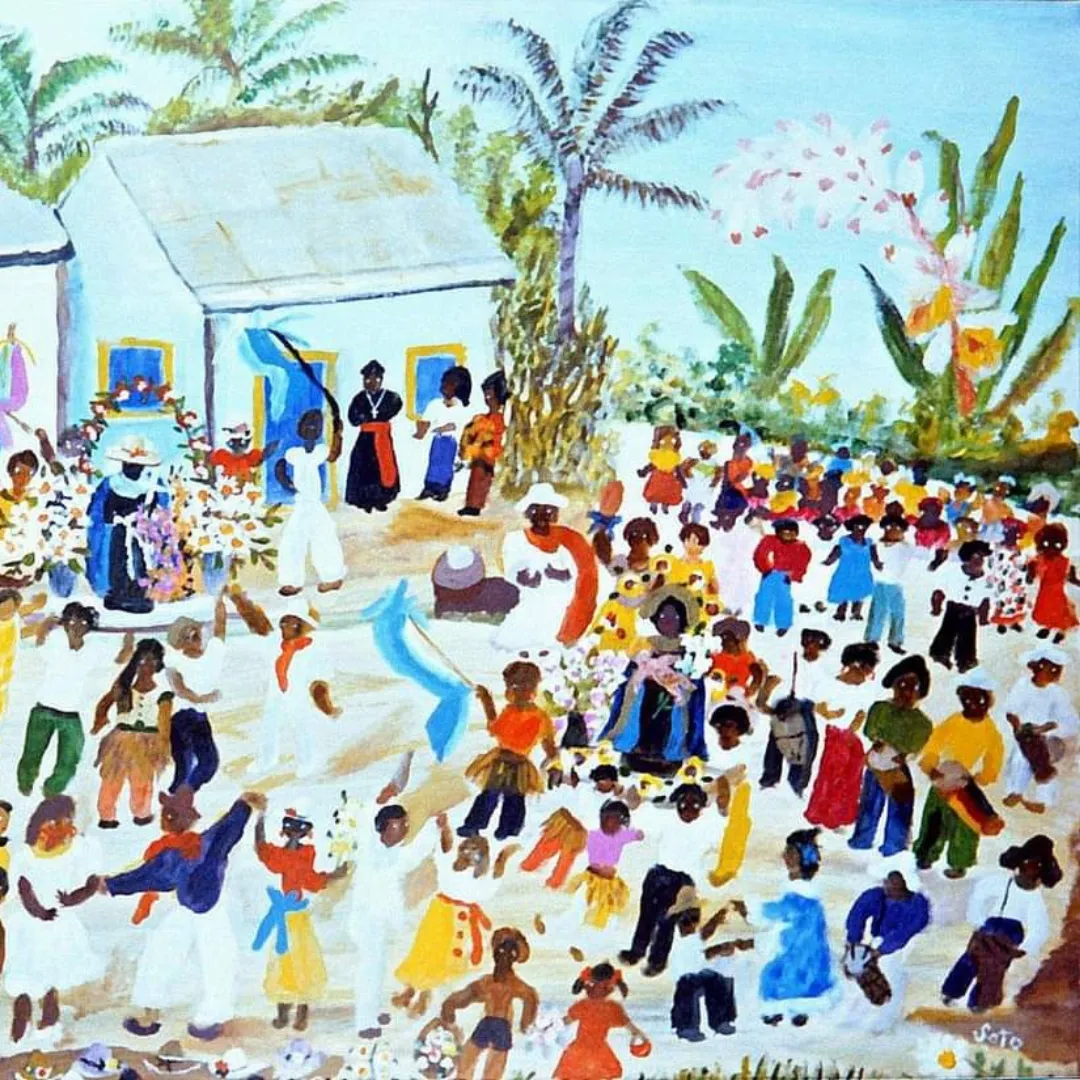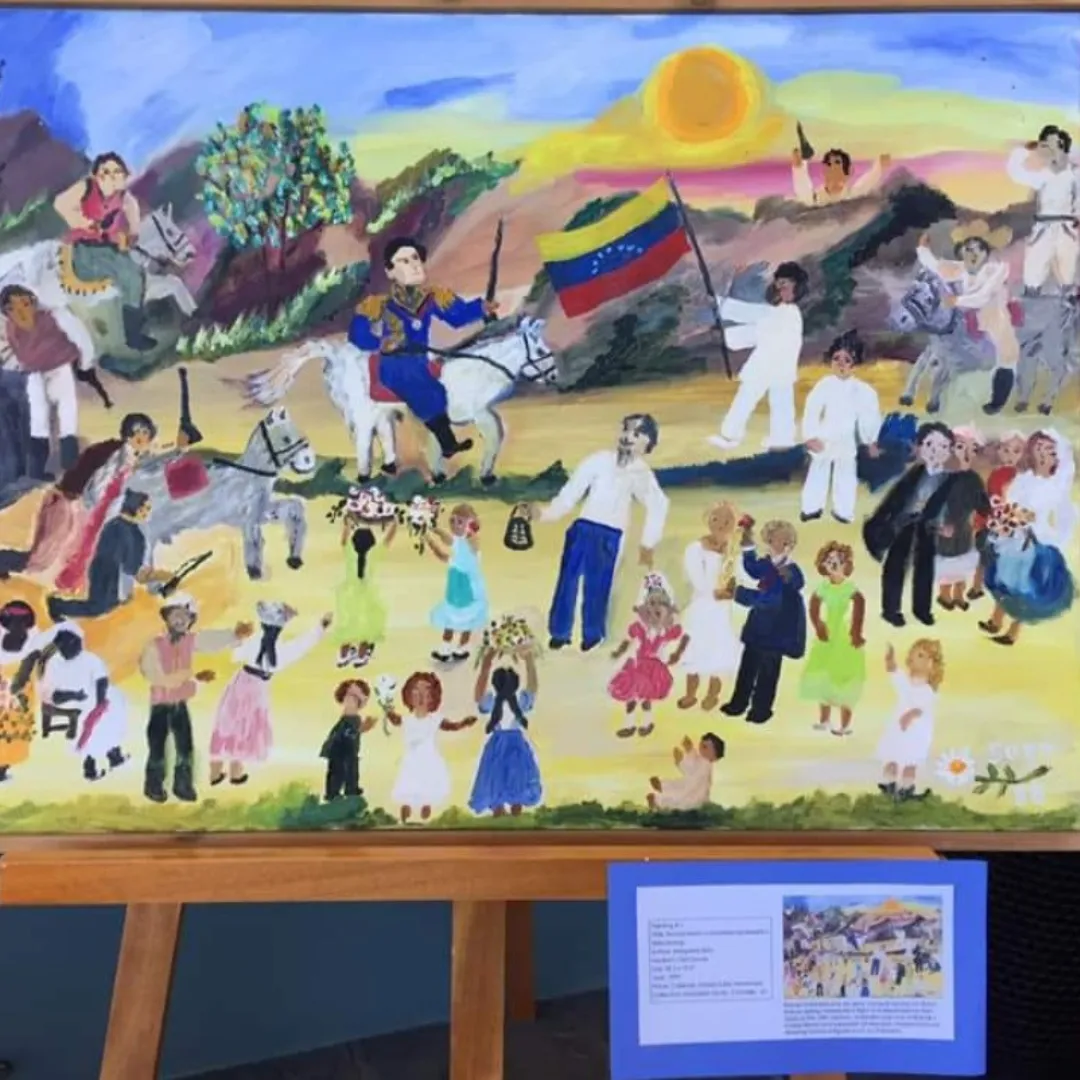
Actually, in my country, Venezuela, there are many valuable, courageous, educated, enterprising, kind-hearted women, who promote foundations in the arts and science, but apart from my mother, I have never thought that any of them would be my example to follow.
For me, "women in science and the arts" always look from science, to deliver from the human.
In addition, Women make each other, just as we do my dear sisters in this community of ladies of the hive, and nothing like when we have to honor those who opened and paved the way for us to fulfill our mission today from different and gentler realities.
Having said that, today, I am selecting a woman, an icon for my life and for history in my country, especially in the Zulia region, in our beloved land of the sun. A woman of the sciences, arts, and social promoter, in the humanistic, she was her own muse.
From the age of 17 until the age of 77, she wore a white coat to work every day. She was a nurse by profession, and her working life was spent in hospitals.
Margarita Soto was a lady artist and always a creator of life, art, health, and humanism, She was born on June 19, 1917, and she was known for her vocation of service and doula, She was a woman who since age 20, she attended about 5000 births between the hospital and others in the homes of women in labor, all births are registered with the ministry of health in my country.
She was the founder of the Maternal and Infant House of Cabimas in 1940. Painter (plastic artist). She was an art teacher at the high school of maestro Vicente Rojas, and acted in theater under her direction, in the plays "Simón Bolívar", which was performed in a temple behind the cathedral, and "Doña Rosa", which was in the Cinema Varieties. However, she left the arts for 42 years to dedicate herself to the work of midwife of the soul.
She attended the birth of the first conjoined twins from Cabimas, Zulia State, at the Dr. José Gregorio Hernández clinic. When Margarita had to attend to a delivery, she would travel by donkey, bicycle, truck, or whatever in order to arrive, at any time, day or night. Many times, he only received thanks from family members, with limited financial means. The only thing she demanded was to be notified, in time, that she was going to be the doula.
I think that my grandmother was advanced for the time, that she had to live, with great sensitivity towards others and her naive always expressed her way of seeing her culture, her idiosyncrasies, and her local environment.
She had a strong and dominant character in my opinion that helped her in that task.



Later, due to an accident that injured one of his arms, the right one at the height of his shoulder, he decided to resume his artistic vocation. In her paintings, he narrated everyday motifs, events of her environment, births, religious holidays, fairs, and historical themes of the city.
Particularly, her work is characterized by the presence of children, the childish, which is reflected in almost all her characters. Likewise, the use of pure colors predominates in her paintings, especially blue and yellow, with which she achieved nuances that gave an atmosphere of joy to the scenes described.
In 1984, She made an individual exhibition at the Juan Félix Sánchez House of Culture, in Mérida. In 1987, she was part of the exhibition Painters of Cabimas and the I Biennial of Popular Art Bárbaro Rivas, where she won the Second Prize; both events were held at the Museum of Popular Art of Petare, in Caracas. There are still traveling works in other countries of the world, even after her departure to the heavenly Eden in 1994.
In 1988, he participated in the National Salon Cervecería de Oriente, in Barcelona (Anzoátegui state), and in the National Salon of Plastic Arts, in the Popular Art section, at the Museum of Popular Art of Petare, in Caracas.
The following year she participated in the II Bienal Bárbaro Rivas, and in 1992 she won the Painting Prize at the III Bienal Bárbaro Rivas; events held at the Art Museum Popular de Petare, in Caracas. At the end of that year, she participated in the exhibition Images of the Popular Genius, organized by the National Art Gallery, in Caracas, with the sponsorship of the Bigott Foundation. Her pieces are included in the collections of the National Art Gallery, the Petare Folk Art Museum, and the Polar Foundation.
If Margarita Soto's story has taught me anything, it's that she was a woman who raised her voice (perhaps the voice of many), once again, to make herself visible, defending the reproductive rights of Venezuelan women and their families.
She always talked about respecting the will, desire, and right of every mother to bring her children into the world.
Margarita was a valuable woman, she was a Doula of Life or Midwife of the soul, of the most beautiful alchemical journeys that every woman who chooses her doula has been able to witness. A scholar of everything related to respected childbirth and birth, and how mandatory the humanization of birth should be, she was a restless soul who dabbled in different respiratory and therapeutic techniques to support the growth and cultivation of the consciousness of families and professionals.
This woman sought from science and delivered from the human.
I honor her essence as a woman from Zulia, a woman of sciences and plastic arts, a multifaceted woman. I also learned that with my favorite woman in science and the arts, who is my maternal grandmother, Margarita Soto, because if she taught me anything and accompanies me every day in my profession, it is to keep alive the scientific vocation, research, and the love for the arts in all its manifestations.
The naive work, masterfully, represented their feelings in each painting, their work of art. She was a detailed woman in her pictorial work who did not let many aspects of cultural life in the Zulia region and in my country die.
Teacher and inspirer of many. Tenacious, persevering, consistent, and consistent woman.
She died on October 10, 1994. Four years after his death, the Cultural Foundation and House Museum was inaugurated in his honor. Today, 29 years after her departure, she continues to be an example of a woman and a great reference for many professionals, and plastic artists, but especially for us as women.
Grateful to live for so much joy.

Icons by: Icofinder
Separator made with Canva by @janitzearratia
Any images in this post are edited with Canva
Translation with |DeepL
